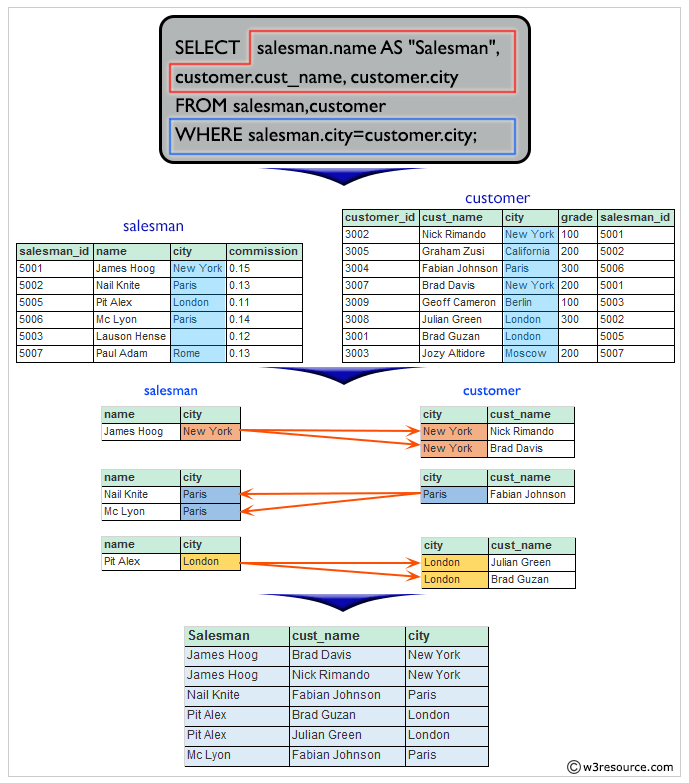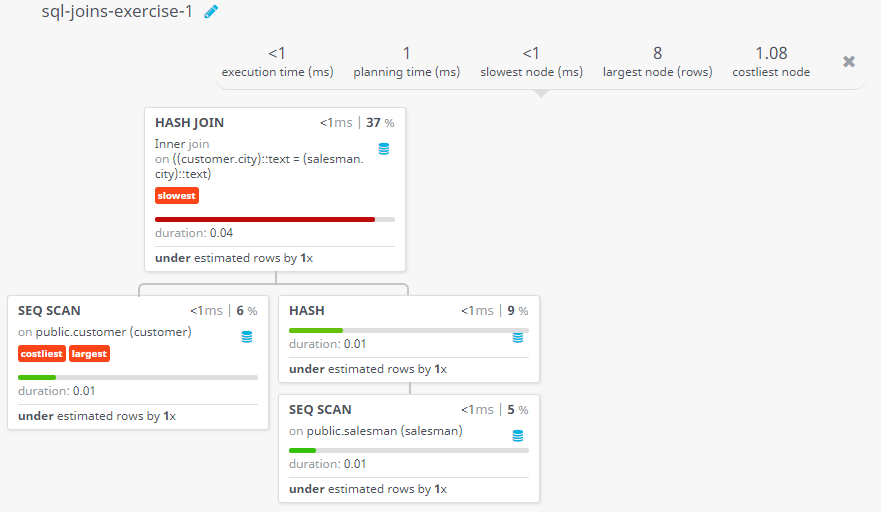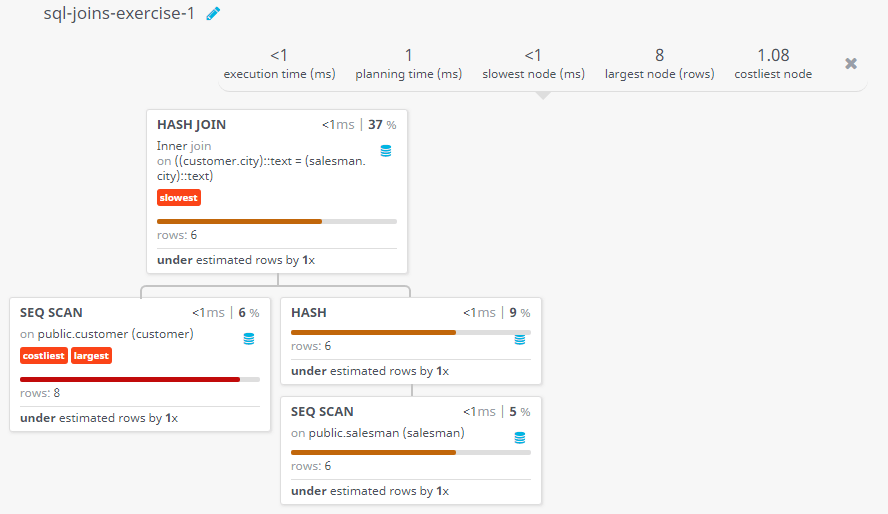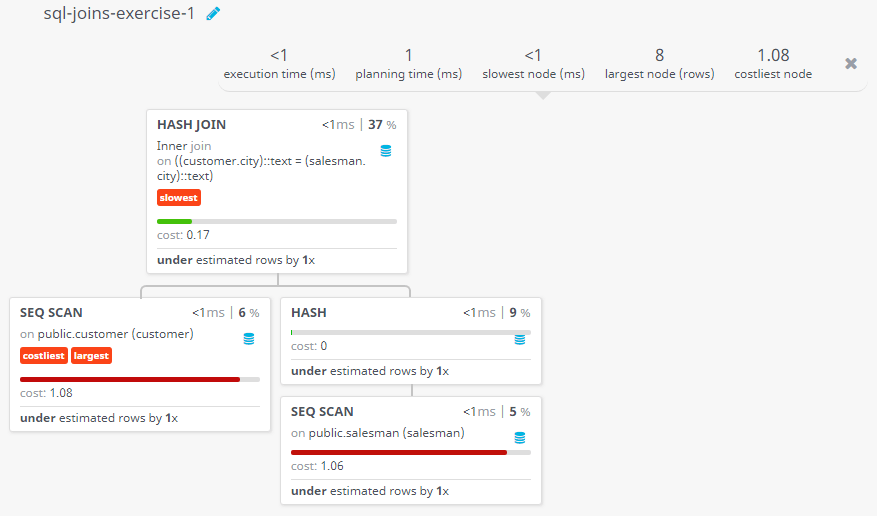SQL Exercise: Salesmen and customer, who belongs to same city
1. Sales & City Matching
From the following tables write a SQL query to find the salesperson and customer who reside in the same city. Return Salesman, cust_name and city.
Sample table: salesman
salesman_id | name | city | commission
-------------+------------+----------+------------
5001 | James Hoog | New York | 0.15
5002 | Nail Knite | Paris | 0.13
5005 | Pit Alex | London | 0.11
5006 | Mc Lyon | Paris | 0.14
5007 | Paul Adam | Rome | 0.13
5003 | Lauson Hen | San Jose | 0.12
Sample table: customer
customer_id | cust_name | city | grade | salesman_id
-------------+----------------+------------+-------+-------------
3002 | Nick Rimando | New York | 100 | 5001
3007 | Brad Davis | New York | 200 | 5001
3005 | Graham Zusi | California | 200 | 5002
3008 | Julian Green | London | 300 | 5002
3004 | Fabian Johnson | Paris | 300 | 5006
3009 | Geoff Cameron | Berlin | 100 | 5003
3003 | Jozy Altidor | Moscow | 200 | 5007
3001 | Brad Guzan | London | | 5005
Sample Solution:
-- This query selects specific columns ('salesman.name' with alias "Salesman", 'customer.cust_name', and 'customer.city')
-- from the 'salesman' and 'customer' tables.
-- It retrieves data where the 'city' column in the 'salesman' table matches the 'city' column in the 'customer' table.
SELECT salesman.name AS "Salesman", customer.cust_name, customer.city
-- Specifies the tables from which to retrieve the data (in this case, 'salesman' and 'customer').
FROM salesman, customer
-- Specifies the condition for joining the tables and filtering the data.
WHERE salesman.city = customer.city;
Output of the Query:
Salesman cust_name city James Hoog Nick Rimando New York James Hoog Brad Davis New York Pit Alex Julian Green London Mc Lyon Fabian Johnson Paris Nail Knite Fabian Johnson Paris Pit Alex Brad Guzan London
Explanation:
The said SQL query is selecting the name of the salesman, the customer's name, and the customer's city from the salesman and customer tables, and only displaying results where the city of the salesman matches the city of the customer. The column "name" of the "salesman" table is given an alias of "Salesman".
Visual Explanation:
Go to:
PREV : SQL JOINS Exercises Home
NEXT : Customers and their cities for given range of orders.
Practice Online
Query Visualization:
Duration:
Rows:
Cost:
For more Practice: Solve these Related Problems:
- Write a SQL query to list pairs of salespeople and customers residing in the same city, and filter the results to only include cities that start with a vowel.
- Write a SQL query to retrieve salesperson name, customer name, and city for matching records, ordering the result by customer name in descending order.
- Write a SQL query to display salespeople and customers from the same city where the salesperson’s commission is above the city average.
- Write a SQL query to find salespeople and customers sharing the same city, but only include cities where more than two customers exist.
Have another way to solve this solution? Contribute your code (and comments) through Disqus.
What is the difficulty level of this exercise?
Test your Programming skills with w3resource's quiz.




